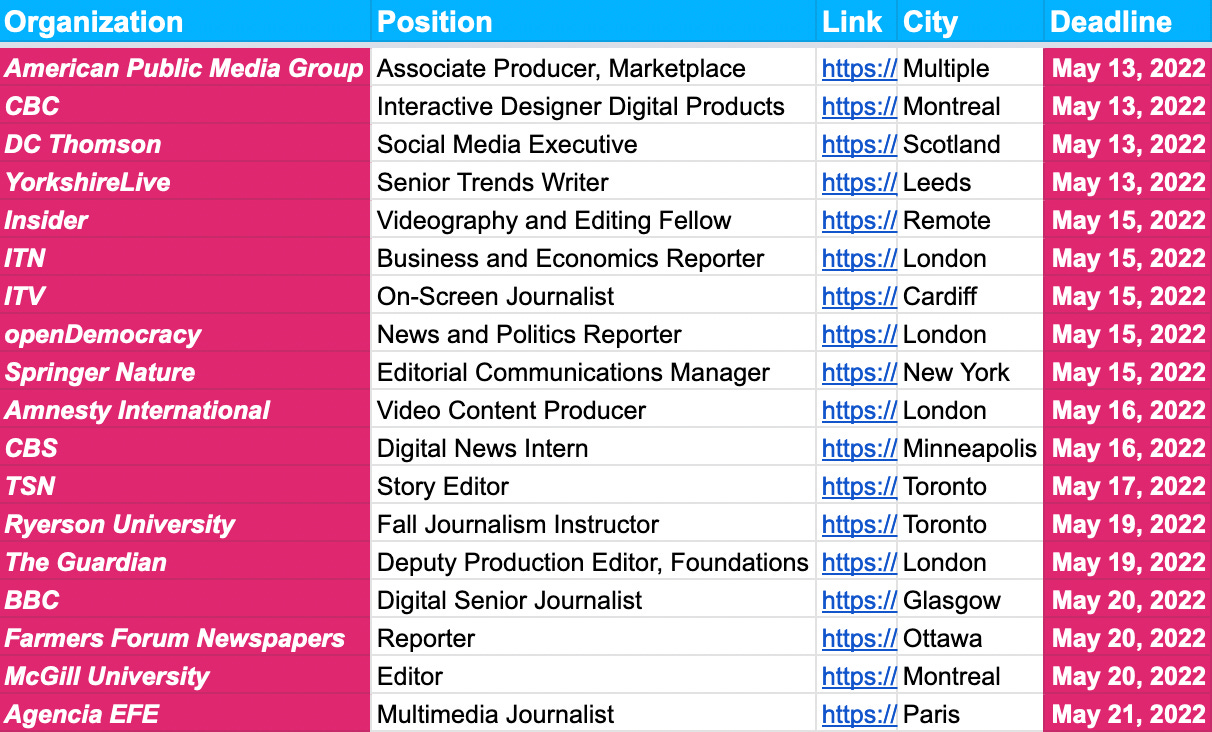Hello folks and happy Friday! Not a whole lot to get through today, so we'll hit a couple plugs and then look at some highlights from the International News Media Association's 2022 Conference currently taking place remotely.
First up is Monday’s jobs update where we added hundreds of new openings at the likes of Bloomberg, Discovery, Sky Sports, The Guardian, New York Times and VICE. Subscribe below for full access…
And if your organisation is hiring, I'd love to help you gain more traction. Fill out this form and we'll chat. 👍
Next up is the American Journalism Online Awards. The deadline to nominate and vote is this Sunday so get your submissions in!
Okay, let’s talk some #INMA2022…
Leading us off is London Business School professor Tammy Erickson’s talk on how newsrooms can offer long-term employability. I especially like this because it challenges the archaic assumption that money is the only motivator. Of course, money does indeed motivate people as it helps provide life’s essentials. But as we’ve discussed in the past, legendary behaviourial scientist Daniel Kahneman’s study suggests money and happiness correlate only up to a certain point — around $75,000. Anything more and the correlation plateaus, hence why it’s in newsrooms’ best interests to offer a more wholesome employment experience.
As Erickson put it: "The most valuable thing you can offer is what I would call long-term employability. Give them skills that make them employable over the long-term. This is something people crave."
Next up is The New York Times' long journey to building perhaps the most attractive subscription on the market. As friend of the newsletter Anna Mazurek told us last year, “diversity equals stability”, and the NYT has proven that this approach doesn't just apply to freelancers and the self-employed. A blend of acquisitions — The Athletic and non-news app Wordle — and in-house development of products such as the 80-year-old NYT crossword, have helped the newspaper become one of the most aggressive, yet secure organisations in the industry.
German newspaper BILD caught my attention with their innovative approach to subscription pricing. In an attempt not to charge too much and scare users off, or too little and miss out on vital revenue, Europe’s largest newspaper literally changes its prices for different users each and every night.
As someone who runs a subscription service, I get a little weirded out knowing users’ activity is tracked so closely and exploited for profit. But if such experimenting can establish a blueprint for smaller outlets to adopt similar techniques, then I’m for it.
And finally, the question of whether the news cycle in recent years has been the most volatile and chaotic in history is up for debate. What’s less debatable is the fact that historic news events will always occur and inevitably boost subscription numbers. While I’ll be the first to advocate for less terrible news in the world, there’s some serenity knowing that when it comes to it, readers will always pay to consume breaking news from credible sources, and essentially secure journalism’s long-term future.
That’s all for this week. Preview of the hundreds of deadlines we have currently on the job board are below. Speak again on Monday! 👋
🚨 Job Corner 🚨
✍️ Want to have a job featured? Fill out this form and we’ll help you out ✍️








